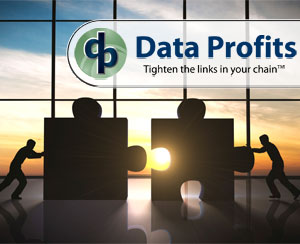Demand Forecasting for Tomorrow's Internet of Things
The number of retailers and wholesalers closing locations continues to grow. Today the customer wants new choices every month. In the old days we could change products and assortments 2 times a year and then later that changed to 4 times a year. The internet of things (IoT) has redefined what is new and more importantly the expectation of the customer to have new choices every month. The issue is S&OP software that was written even 7 years ago is inadequate to serve a modern retail or wholesale business. Many ‘demand’ software solutions are not calculating demand, rather using a sales forecast method which is painful to see. Forecasting algorithms that use time series and regression analysis are the wrong choice of math for slow and intermittent demand. The technology has base code based on some old S&OP ideas and those ideas do not work today. This type of software cannot have an upgrade to move from top down to bottom up, and no product location forecasting does NOT mean it is a bottom up system. Upgrades are impossible due to the older architecture making change a start over situation that is very expensive for the tech company and customers… what to do?!?!?!
Running antiquated demand forecasting software? Find out what you need to keep pace with the Internet of Things (IoT).
The number of retailers and wholesalers closing locations continues to grow. Today the customer wants new choices every month. In the old days we could change products and assortments 2 times a year and then later that changed to 4 times a year. The internet of things (IoT) has redefined what is new and more importantly the expectation of the customer to have new choices every month. The issue is S&OP software that was written even 7 years ago is inadequate to serve a modern retail or wholesale business. Many ‘demand’ software solutions are not calculating demand, rather using a sales forecast method which is painful to see. Forecasting algorithms that use time series and regression analysis are the wrong choice of math for slow and intermittent demand. The technology has base code based on some old S&OP ideas and those ideas do not work today. This type of software cannot have an upgrade to move from top down to bottom up, and no product location forecasting does NOT mean it is a bottom up system. Upgrades are impossible due to the older architecture making change a start over situation that is very expensive for the tech company and customers… what to do?!?!?!
Running antiquated demand forecasting software? Find out what you need to keep pace with the Internet of Things (IoT)
The Internet of Things (IoT) & Demand Forecasting
Not only customers but retailers too are experiencing more connectedness in their lives – an Internet of Things (IoT) – made possible by technologies such as the internet, RFID chips, and digital signage. Yet given the possibilities ushered in by the IoT it’s shocking how behind technology software is for most inventory planning and replenishment software.
Demand Forecasting Software Not Ready
The most popular demand planning systems are antiquated. Old base code, service contracts, and business models make it impossible to get significant upgrades. Even recently installed systems use outdated methodologies and mindsets, and updates can still be two years away. These old school dinosaurs cannot keep up with the demands of modern Omni-channel retailing and a more connected consumer.
Disrupt the Old Demand Forecasting Software Model
What are the features that modern demand forecasting and planning systems need?
- Spot the market trend faster – use new data to drive faster and more accurate forecasting.
- Turn on a dime – be flexible enough to accept updates and code changes anytime.
- Lead time forecasting – take new lead time information and drive automatic cost savings through lead time forecasting
- Cut through the crud – make it fast and easy to find exceptions and free you up to do more important work.
- Available anytime, anywhere – give you 24/7 access from anywhere.
Don’t be stuck in the Stone Age. Read more…
Our CEO Stuart Dunkin presents at RVCF Spring Conference April 19th.
Forecasting, Replenishment and Lead Time Mistakes Even Smart People Make
Why does your inventory explode with overstock at the wrong time and then a month later the shelf is empty. While some might claim the vendor is at fault, is it really a vendor issue or signs of deeper issues within your supply chain methodology? Today, people will often interchange demand planning and demand forecasting as if they are the same thing. Do you know someone who does the same thing each month and then wonders why the harder they work the more the results stay the same? Crazy, right?!?!, who does that! What if you were to learn where key components of your planning and replenishment strategies were at odds with each other and creating lost revenue. Then with that information, what if you could connect the vendor into your planning and replenishment in a manner that connects the critical pieces of your supply chain.
I hope you will join me and several of your retail, wholesale and supplier friends for my presentation at RVCF’s Spring 2016 conference in Fort Worth Florida. Learn some new ideas and find out why some things just aren’t working anymore and what you can do to be making it better.
In the News
Target Solves Out-of-Stocks with Supply Chain Tech
By Dan Alaimo
September 8, 2015 – Target’s (NYSE:TGT) supply chain woes are coming to a boil. Out of stocks and sometimes entirely empty shelves have become all too common, and have come to the attention of the national media.
Brian Cornell, Target’s CEO, has stopped downplaying the supply chain issue and has said it is a serious problem that must be solved, according to MPR News. Supply chain problems played a big role in the chain’s decision to close its stores in Canada, but the issue is also apparent to shoppers in U.S. stores, especially in the grocery aisles. Target is now investing $1 billion in supply chain and technology. Walmart is also making supply chain changes to adapt to the new retail environment.
A first step in Target’s strategy was naming John Mulligan as COO last month and tasking him with fixing the supply chain challenge. He said the retailer’s supply chain has struggled to deliver appropriate goods to stores in a timely manner. Cornell, who came to Target from PepsiCo a year ago, cares more about these supply chain issues than former CEO Gregg Steinhafel. Continue reading…
- Demand Forecasting: The Ultimate Secret for Your Organization’s Success - August 7, 2024
- How to Avoid Carrying Cost Mistakes in Inventory Optimization - June 10, 2024
- 3 Common Forecasting Software Issues and How to Fix - May 20, 2024





